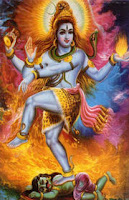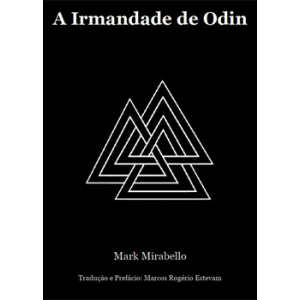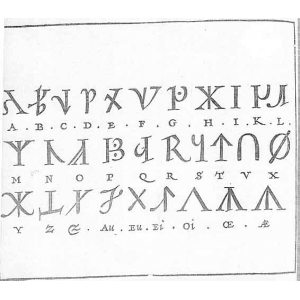
Personally I see making and worshiping God in man made idols as an urge to bring god-consciousness in a visible form. Worshiping God in idol form was an easy way to express THAT, Which is incomprehensible. It is a very weak but significant effort to give an image or representation to God at a time when even human language was not developed enough.
Science talk about physical evolution, but there is a more important evolution for collective human race, which is our mental evolution. Evolution of our collective human consciousness. We see this evolution also in religious understanding. Perhaps the example of Prophet Abraham, the father of monotheism is best in understanding the evolution of our understanding of God. He saw Sun and took it as God and worshiped. At the set of the sun, he rejected sun as God and took moon as God. Then moon also passed by. Then he realized neither the sun, nor the moon is God. But rather it is the Creator of Sun and Moon, Who is the only worthy of worship. Its a simple but sure enough image to understand how humanity evolved in mental projection of the idea of God.
Our thoughts, expression, understanding and ability to grasp more - are all under this great evolution. What the pre-historic cave-men could understand is much different than a man of 21st century. It is as true for the ability to do maths, as for the ability to realize God idea. Thus men took the signs of God, such as a big tree, a big mountain and worshiped it. Even today in Africa people do worship big trees, in Australia the Aboriginal People worship big mountains.
Now one might think, wow! how come they worship a mountain and show devotion to it! We read in Quran where God speak that even mountains are signs of God: Surely the Safa and the Marwa are among the signs appointed by God; so whoever makes a pilgrimage to the House (Kaba) or pays a visit (to it), there is no sin for him if he goes round them both; and whoever does good spontaneously, then surely God is Grateful, Knowing. (The Quran 002.158)
Although Islam, as Judaism is very much against any kind of idol worshiping or adoration of icons; it does acknowledge the fact that devotion to signs of God are nothing but devotion to God Himself. Thus the worshiper of God in form - in the outer reality they worship a form, a sign; but in greater inner reality they all bow down to One God. It is the same for idol worship of ancient ages as well. The very idea of a transcendent God was beyond grasp at the earlier stages of human mental evolution. Thus it was an inner tendency for the ancient people to create a visible form so that mass can pray to that form, rather than an Invisible, Incomprehensible Transcendent Being. This visible form enabled people to express their devotion by offerings, to meditate and pray easily.
This human tendency to have a form even for God so that he or she can stand in front, can pray to - is a very ancient tendency. We find this evidence in Bible and Quran as well. The history of great Prophet Moses is one of such example. When Moses went to Mount Sinai to meditate on and pray to God (to speak with God, in another word), his own people grew impatient. And what did they wanted to do?
They wanted a visible form of God, Who in Reality is beyond form. People of Moses said, as we find in Quran: And remember ye said: "O Moses! We shall never believe in thee until we see God manifestly," but ye were dazed with thunder and lighting even as ye looked on. (The Quran, 002.055)
When Moses went for retreat, they wanted a visible God, so they made a idol that looked like something which they could comprehend. And that something was the form of a cow. There came to you Moses with clear (Signs); yet ye worshipped the calf (Even) after that, and ye did behave wrongfully. (The Quran 002.092)
Now when our collective human consciousness became mature enough to understand the message of God's transcendental Unity, it was proclaimed to turn back from all idols and turn to One and Only God. Then it became a wrongful behavior to neglect God's transcendental nature and to keep with the idol. Apart from theological implication, it also has social implication. Worshiping many form of gods (idols) in tribal culture proved to be dividing the humanity. And turning to One God universally was instrumental for many of men's achievement. Whole nation rose and changed themselves. Thus, proclaiming God's Oneness is a message to undivide, to bind humanity, which is more important than many other religious goals. Because when humanity realizes its unity, it realizes God's unity, the unity of one and only Reality.
[+] Please visit MysticSaint.Info For full multimedia experience and enjoy special music.
Blessings,
Sadiq
Labels: list of roman gods and goddesses the names of the gods and goddesses gods and goddesses of mythology different gods and goddesses mayans gods and goddesses the book of shadows pages gardnerian book of shadows how to master lucid dreaming lucid dreaming wild





